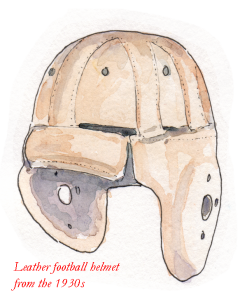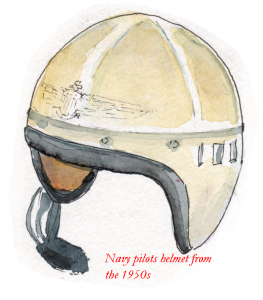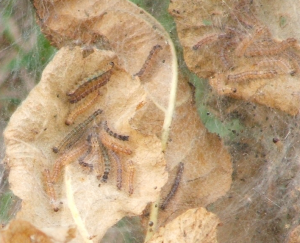Gordon Giesbrecht, PhD is a professor of thermophysiology and the Director of the Laboratory for Exercise and Environmental Medicine at the University of Manitoba. He has authored over 100 articles on cold physiology. An excellent speaker and educator, considering the number of times he has been intentionally hypothermic, he also has a great sense of humor. He has been known to refer to the Alaskan Panhandle as “ U.S. occupied British Columbia.”
WMN: Was there an event in your personal life, or education, that sparked your interest in what happens to the human body when it begins to cool below our normal core temperature?
GG: Well, in the late 1970’s and early 80’s I was a wilderness instructor in the Rockies. Mountain climbing, rock climbing, white water canoeing, ski touring and stuff like that, and getting cold, or staying warm I should say, becomes very important when you are pursuing those activities. Then when I returned to Winnipeg to do a Masters at the University of Manitoba I found a physician named Gerry Bristow who was willing to provide medical oversight while we actually made people hypothermic. I didn’t think we would be able to do that and when I found out I thought I’d died and gone to heaven.
WMN: Dr. Hamlet has postulated for years that growing up in a cold weather environment changes how a person reacts to getting cold and their attitude about cold weather. In essence, if you grew up where it gets cold you more aware of the real dangers and less likely to be frightened of the cold. Do you share that assessment?
https://www.wildernessmedicinenewsletter.com/wp-content/uploads/2014/10/wmnlogo20151.png00WMN Editorshttps://www.wildernessmedicinenewsletter.com/wp-content/uploads/2014/10/wmnlogo20151.pngWMN Editors2013-03-07 16:45:062013-03-07 16:45:06Interview with Gordon Giesbrecht, PhD
For years we rode our bicycles without helmets, played touch or flag football without helmets or padding, climbed, paddled, skied and did all sorts of sports without worrying about a little bump on the head. But, it would appear that modern medicine, moms, and coaches have uncovered some potentially major problems associated with a simple head injury known as a concussion.
Any bump or blow the head that damages the brain is referred to as a traumatic brain injury (TBI). A TBI is an injury to the brain that disrupts of the brain’s normal functioning . TBI is referred to as mild if the loss of consciousness or changes in level of consciousness are brief. TBI is considered severe if the changes or loss of consciousness are extended.
Traumatic Brain Injury Stats:
There are 1,700,000 TBIs per year in the USA.
75% of TBIs are concussions or other forms of mild TBI.
Causes of TBI:
Falls – 35.2%
Motor Vehicle Accidents – 17.3% (largest % of deaths – 31.8%)
Struck by/Against – 16.5% (largest cause of TBI in children – 25%)
Assault – 10%
Unknown/other – 21%
Helmets and TBI:
90% of fatal bicycle accident victims were NOT wearing a helmet.
Motorcycle accidents – greater chance of severe TBI and death if the driver or passenger were NOT wearing a helmet.
Sports:
21% of TBI are sports-related in children and teenagers.
#1 cause of sports-related death.
85% of head injuries (TBI) are prevented by helmets.
A concussion is the most common form of TBI. A concussion occurs when the brain has suffered a biomechanical injury, a direct force has been applied to the head, causing functional rather than structural changes of the brain, in other words a disruption of normal functioning of the brain. What this simply means is that the individual has the symptoms of a head injury, but all diagnostic imaging, xrays, MRIs, and CTs of the head are normal. The insult to the brain is on a physiological, cellular level, rather than creating gross anatomical changes.
Protozoa are single-celled organisms that can be symbiotic (live within another organism without causing harm) or parasitic (living within another organism at the expense of the organism, causing illness and death).
There are also many other single-celled microbiological organisms that cause disease and death. The science of biology sorts out all the various living organisms using taxonomy, the arrangement or defining of biological organisms by shared characteristics. In the world of microbiology, some of these unicellular organisms that can cause death and illness are viruses, bacteria, and protozoa.
VIRUS:
A virus is an infectious organism that consists solely of genetic material, DNA or RNA, surrounded by a protective shell, referred to as the capsid. They are obligate intracellular parasites, in that they cannot reproduce on their own. A virus has to inject its genetic material into another cell. Once inside the cell the viral genetic material will insert itself into the native DNA. It will then use that cell’s own DNA and turn it into a viral factory. Viruses are very tissue-specific, in that they will only invade a specific type of cell. For example HIV only invades and destroys a certain type of white blood cell, T-cells, and rabies only invades nerve cells.
BACTERIA vs. PROTOZOA:
Bacteria and protozoa are also unicellular organisms, but they are different from viruses because they can reproduce on their own, typically by binary fission. They also contain various organelles, eat, and excrete. Although in various shapes and sizes, bacteria and protozoa are very similar, except that bacteria are prokaryotes (They do not have a nucleus that contains their genetic material; the DNA is within the cell but, not in a separate membrane structure). Protozoa, on the other hand, are eukaryotes (They do have a nucleus with a cell membrane that contains their genetic material). Protozoa are also mobile in that they can have move by cilia, flagella, or by cytoplastic flow which provides them with the ability to swim through their environment.
What on earth compelled us to write an article about venomous caterpillars? What a curious topic. The whole process began in our very own back yard. As it turns out, this has been a good year for tent caterpillars. There have been lots of them creating their nasty looking web tents in our apple trees. The good news is that the leafy destruction of the trees does little or no harm to the tree itself. But, if you get a couple of those hairy little caterpillars down the back of your shirt as you clean the tents out of the trees, and you end up with quite an uncomfortable rash.
How does a caterpillar cause a rash?
Caterpillars are the larval forms of the members of the order Lepidoptera, insects that consist of moths and butterflies. We enjoy these beautiful little insects as they flit about the flowers collecting nectar or fly around the front porch light. Most of us consider them to be harmless creatures to be admired and enjoyed. But, as it turns out, some of them in their larval, or caterpillar, form can be quite harmful and dangerous to humans. Many of these larvae have defense mechanisms to help minimize the risk of being eaten by a bird, frog, or other beast. It is these defense mechanisms that can cause us problems as well.
These caterpillar defense mechanisms include spiny bristles, setae which are long, fine hairs, and urticating hairs that have venom glands. In fact, there are several species of caterpillars in the jungles of South America that contain toxins potent enough to kill humans. These potentially lethal caterpillars are the larvae of the Bag Shelter Moth and the South American Silk Moth.
It is the puss caterpillar, Megalopyge opercularis, that is the most dangerous caterpillar in North America.
There is even a name for the contact dermatitis and other symptoms that are caused by coming in physical contact with a toxic caterpillar, lepidoterism, also known as moth or caterpillar dermatitis.
THE PROBLEM:
The problem is these fine hairs or spines , also referred to as setae, that cover the caterpillar and make it less appetizing to a bird or other consumers of crawling critters. These hairs are very irritating on the skin, if inhaled, they can cause respiratory distress and precipitate an asthma attack.
Interview with Gordon Giesbrecht, PhD
/in Cold Injuries, Environemtal Injuries, Hypothermia, Medical Response/by WMN EditorsISSN-1059-6518
Gordon Giesbrecht, PhD is a professor of thermophysiology and the Director of the Laboratory for Exercise and Environmental Medicine at the University of Manitoba. He has authored over 100 articles on cold physiology. An excellent speaker and educator, considering the number of times he has been intentionally hypothermic, he also has a great sense of humor. He has been known to refer to the Alaskan Panhandle as “ U.S. occupied British Columbia.”
WMN: Was there an event in your personal life, or education, that sparked your interest in what happens to the human body when it begins to cool below our normal core temperature?
GG: Well, in the late 1970’s and early 80’s I was a wilderness instructor in the Rockies. Mountain climbing, rock climbing, white water canoeing, ski touring and stuff like that, and getting cold, or staying warm I should say, becomes very important when you are pursuing those activities. Then when I returned to Winnipeg to do a Masters at the University of Manitoba I found a physician named Gerry Bristow who was willing to provide medical oversight while we actually made people hypothermic. I didn’t think we would be able to do that and when I found out I thought I’d died and gone to heaven.
WMN: Dr. Hamlet has postulated for years that growing up in a cold weather environment changes how a person reacts to getting cold and their attitude about cold weather. In essence, if you grew up where it gets cold you more aware of the real dangers and less likely to be frightened of the cold. Do you share that assessment?
Read more
Mild TRAUMATIC BRAIN INJURY (mTBI) – CONCUSSIONS
/in Face, Head, Specific Injuries, Trauma/by WMN EditorsISSN-1059-6518 Volume 25 Number 6
Mild TRAUMATIC BRAIN INJURY (mTBI) – CONCUSSIONS
By Frank Hubbell, DO
For years we rode our bicycles without helmets, played touch or flag football without helmets or padding, climbed, paddled, skied and did all sorts of sports without worrying about a little bump on the head. But, it would appear that modern medicine, moms, and coaches have uncovered some potentially major problems associated with a simple head injury known as a concussion.
bump on the head. But, it would appear that modern medicine, moms, and coaches have uncovered some potentially major problems associated with a simple head injury known as a concussion.
Any bump or blow the head that damages the brain is referred to as a traumatic brain injury (TBI). A TBI is an injury to the brain that disrupts of the brain’s normal functioning . TBI is referred to as mild if the loss of consciousness or changes in level of consciousness are brief. TBI is considered severe if the changes or loss of consciousness are extended.
Traumatic Brain Injury Stats:
There are 1,700,000 TBIs per year in the USA.
75% of TBIs are concussions or other forms of mild TBI.
Causes of TBI:
Falls – 35.2%
Motor Vehicle Accidents – 17.3% (largest % of deaths – 31.8%)
Struck by/Against – 16.5% (largest cause of TBI in children – 25%)
Assault – 10%
Unknown/other – 21%
Helmets and TBI:
90% of fatal bicycle accident victims were NOT wearing a helmet.
Motorcycle accidents – greater chance of severe TBI and death if the driver or passenger were NOT wearing a helmet.
Sports:
21% of TBI are sports-related in children and teenagers.
#1 cause of sports-related death.
85% of head injuries (TBI) are prevented by helmets.
A concussion is the most common form of TBI. A concussion occurs when the brain has suffered a biomechanical injury, a direct force has been applied to the head, causing functional rather than structural changes of the brain, in other words a disruption of normal functioning of the brain. What this simply means is that the individual has the symptoms of a head injury, but all diagnostic imaging, xrays, MRIs, and CTs of the head are normal. The insult to the brain is on a physiological, cellular level, rather than creating gross anatomical changes.
Read more
PARASITIC PROTOZOA – 2012
/in Environemtal Injuries, Infection, prevention, Water disinfection/by WMN EditorsNovember/December 2012 SSN-1059-6518
Volume 25 Number 6
PARASITIC PROTOZOA
By Frank Hubbell, DO
What are protozoa, and why do we care?
Protozoa are single-celled organisms that can be symbiotic (live within another organism without causing harm) or parasitic (living within another organism at the expense of the organism, causing illness and death).
There are also many other single-celled microbiological organisms that cause disease and death. The science of biology sorts out all the various living organisms using taxonomy, the arrangement or defining of biological organisms by shared characteristics. In the world of microbiology, some of these unicellular organisms that can cause death and illness are viruses, bacteria, and protozoa.
VIRUS:
A virus is an infectious organism that consists solely of genetic material, DNA or RNA, surrounded by a protective shell, referred to as the capsid. They are obligate intracellular parasites, in that they cannot reproduce on their own. A virus has to inject its genetic material into another cell. Once inside the cell the viral genetic material will insert itself into the native DNA. It will then use that cell’s own DNA and turn it into a viral factory. Viruses are very tissue-specific, in that they will only invade a specific type of cell. For example HIV only invades and destroys a certain type of white blood cell, T-cells, and rabies only invades nerve cells.
BACTERIA vs. PROTOZOA:
Bacteria and protozoa are also unicellular organisms, but they are different from viruses because they can reproduce on their own, typically by binary fission. They also contain various organelles, eat, and excrete. Although in various shapes and sizes, bacteria and protozoa are very similar, except that bacteria are prokaryotes (They do not have a nucleus that contains their genetic material; the DNA is within the cell but, not in a separate membrane structure). Protozoa, on the other hand, are eukaryotes (They do have a nucleus with a cell membrane that contains their genetic material). Protozoa are also mobile in that they can have move by cilia, flagella, or by cytoplastic flow which provides them with the ability to swim through their environment.
Read more
DANGEROUS CATERPILLARS
/in Bites and Stings, Environemtal Injuries, Poisons, Travel Medicine/by WMN EditorsISSN-1059-6518
CATERPILLARS
By Frank Hubbell, DO
Illustrations By T.B.R. Walsh
What on earth compelled us to write an article about venomous caterpillars? What a curious topic. The whole process began in our very own back yard. As it turns out, this has been a good year for tent caterpillars. There have been lots of them creating their nasty looking web tents in our apple trees. The good news is that the leafy destruction of the trees does little or no harm to the tree itself. But, if you get a couple of those hairy little caterpillars down the back of your shirt as you clean the tents out of the trees, and you end up with quite an uncomfortable rash.
if you get a couple of those hairy little caterpillars down the back of your shirt as you clean the tents out of the trees, and you end up with quite an uncomfortable rash.
How does a caterpillar cause a rash?
Caterpillars are the larval forms of the members of the order Lepidoptera, insects that consist of moths and butterflies. We enjoy these beautiful little insects as they flit about the flowers collecting nectar or fly around the front porch light. Most of us consider them to be harmless creatures to be admired and enjoyed. But, as it turns out, some of them in their larval, or caterpillar, form can be quite harmful and dangerous to humans. Many of these larvae have defense mechanisms to help minimize the risk of being eaten by a bird, frog, or other beast. It is these defense mechanisms that can cause us problems as well.
These caterpillar defense mechanisms include spiny bristles, setae which are long, fine hairs, and urticating hairs that have venom glands. In fact, there are several species of caterpillars in the jungles of South America that contain toxins potent enough to kill humans. These potentially lethal caterpillars are the larvae of the Bag Shelter Moth and the South American Silk Moth.
It is the puss caterpillar, Megalopyge opercularis, that is the most dangerous caterpillar in North America.
There is even a name for the contact dermatitis and other symptoms that are caused by coming in physical contact with a toxic caterpillar, lepidoterism, also known as moth or caterpillar dermatitis.
THE PROBLEM:
The problem is these fine hairs or spines , also referred to as setae, that cover the caterpillar and make it less appetizing to a bird or other consumers of crawling critters. These hairs are very irritating on the skin, if inhaled, they can cause respiratory distress and precipitate an asthma attack.
Read more